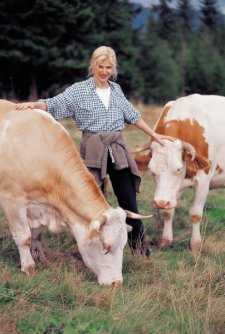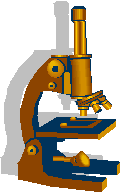

To send a message to an author, click on the author's name at the end of the article.
This Month in Ag Connection | Ag Connection - Other Issues Online
The 2012 growing season is off to a fast start. Forages are maturing at a rapid rate, so a discussion of harvest timing and hay quality relative to plant maturity is in order. In 2010, Iowa State University conducted a hay quality survey and the following article is a review of their findings.
Their data was summarized from a total of 465 forage samples submitted by Iowa producers to a common commercial laboratory during 2010. Maturity for cool-season grasses was described as pre-boot, boot, dough, and dry/dead seed heads. Mixed forage contained both legumes and cool-season grasses and maturities were classified as bud, early flower, late flower, and seed/dough.

When comparing grass maturities, hay harvested in the boot stage was 4 percent higher in energy and 18 percent higher in protein than hay harvested at the dry/dead seed head stage. Mixed grass/legume hay harvested in the early flower stage was 11 percent higher in energy and 23 percent higher in protein than hay harvested in the seed/dough stage. At similar stages of maturity, legume mixed hay had higher energy and higher protein levels than straight grass hay.
Using the Iowa data, winter feeding rations for mature beef cows being fed a maintenance diet for the last 1/3 of gestation were ran. Forage maturity levels used in the calculations for grass hay were boot or dry/dead. Mixed legume maturities were early flower or seed/dough. Protein levels were adequate for all four forage types and maturities. Energy was low for all hay types. For this reason, either soybean hulls or corn grain was added to supply the needed energy to the diets.
Winter feeding rations results: For a herd of 35 head of cows being fed hay for 120 days, mature grass hay required feeding 37.5 bushel more corn or 2.1 tons more soyhulls to meet the energy needs of the herd compared to grass hay harvested at the boot stage. Mature legume mixed hay required feeding 187.5 more bushels of corn or 6.3 tons more soyhulls to meet herd energy needs compared to hay harvested in the early flower stage.
The Iowa data also showed that rain had less impact on hay quality than did stage of maturity at harvest. While it can be difficult to harvest hay at early stages of maturity, it is still a viable goal to shoot for due to the reduced need for winter supplementation.
Source: Gene Schmitz, MU Extension Livestock Specialist
This Month in Ag Connection | Ag Connection - Other Issues Online
Fertilizer applied at the right rate, from the right source, at the right time, and at the right site or place is now commonly referred to as the 4Rs of fertilizer management or nutrient stewardship. This acronym is being used to reinforce the need for best management practices (BMPs) related to plant nutrient applications.

The 3Rs were originally attributed to the basics of education with the Rs referring to Reading, wRiting and aRithmetic. For some reason this abbreviation has held on over time and applied to other situations like recycling and fertilizer management.
Applying fertilizer at the right rate relates to taking proper soil samples and using this information to supplement a soil's needed nutrients and those projected to be needed for optimum or desired yields. It is vital to know soil needs first, so all the other management practices are analyzed and applied in a logical order.
Of the nutrient requirements provided from soil tests, pH should be considered first since it controls the nutrients availability. Then the primary nutrients, nitrogen (N), phosphorus (P) and potassium (K) followed by calcium (Ca) and magnesium (Mg) are considered. The other nutrients sometimes chosen for analysis are sulfur (S) and zinc (Zn). Sulfur is a secondary nutrient and Zn is a micronutrient. They are usually not considered significant since so many Missouri soils have sufficient organic matter and clay to supply S and the micronutrients. Deficiencies in S and/or micronutrients are more likely to occur in sandy and low organic matter soils.
Additional information on fertility needs may be discovered through plant tissue testing, precision or intensive soil sampling, nitrate testing, pre-sidedress nitrogen tests (PSNT) and chlorophyll meter tests.
Then, the right source should be considered to insure a proper balance of availability and economical sources. Selecting appropriate fertilizers is accomplished by surveying local dealers, quarries for lime and on-farm or nearby farm nutrient sources (manures). Other fertilizer considerations may be enhanced efficiency fertilizers and biosolids from sewage plants or waste products from manufacturing.
The third item is fertility applied at the right time. This means providing nutrients when they are needed so they are available as the crop grows and at the right growth stage. Also, application should be timed so the nutrients are less likely to be lost through leaching, runoff, erosion, and in some cases volatilization.
The fourth "R" is placing nutrients where they are most beneficial to the crops and preventing nutrients from escaping into the environment. Manure and sludge incorporation are examples of how farm, social and environmental interest coincide. Another example of specialized fertilizer placement is foliar application. Information for this article came from the Internationals Plant Nutrients Institute (IPNI). See: http://nutrientsforlife.org
Source: Jim Jarman, MU Extension Agronomy Specialist
This Month in Ag Connection | Ag Connection - Other Issues Online
On April 26, 2012 the U.S. of Labor withdrew the proposed ruling that had the attention of many in agriculture in Central Missouri and throughout the nation. Many questions had been raised about the wording and about how it would affect 4-H and FFA projects, part-time jobs for youth and many other concerns.

The statement from the Labor Department included: "The Obama administration is firmly committed to promoting family farmers and respecting the rural way of life, especially the role that parents and other family members play in passing those traditions down through the generations. The Obama administration is also deeply committed to listening and responding to what Americans across the country have to say about proposed rules and regulations."
"The decision to withdraw this rule – including provisions to define the 'parental exemption' – was made in response to thousands of comments expressing concerns about the effect of the proposed rules on small family-owned farms. To be clear, this regulation will not be pursued for the duration of the Obama administration."
After reading statements like that, it is encouraging that making comments does make a difference. Everyone in agriculture strives to improve safety, especially with youth. With school out, now is an excellent time to work with youth and make sure they understand safety procedures and the correct way of doing jobs. It is important that we all continue to work together to teach youth about agriculture and safety procedures.
For the complete statement from the Labor Department see http://www.dol.gov/opa/media/press/whd/WHD20120826.htm
Source: Mary Sobba, MU Extension Ag Business Mgmt. Specialist
This Month in Ag Connection | Ag Connection - Other Issues Online
As the temperatures continue to climb, one might be finding themselves wanting to enjoy the outdoors by riding an ATV (All-Terrain Vehicle) around the farm. All-Terrain vehicles are becoming increasingly popular on farms because of their utility. They can be used to haul livestock feed or transportation to the field. As they have increased in popularity on farms, accidents and injuries to youth and adults have increased. This coincidence reveals the importance of riders understanding all the ATVs safety precautions.

It is important to realize ATVs come in different sizes and one must fit the ATV to the rider's size. Manufacturer's guidelines suggest that norider under the age of 16 should operate an ATV with an engine larger than 90CC. Even if the rider is older than 16, he/she may not have the skills, strength, or maturity to operate that size of an ATV, making it important that you assess your situation individually to ensure you get the proper size for the rider.
All ATV riders need to have the maturity to understand what safety equipment should be worn. The first priority for all riders should be to wear a properly fitted ATV helmet. There are helmets on the market that are made specifically for ATV riders because they have the proper amount of face protection and have the ability to absorb energy on impact. Bicycling, skateboarding, and rollerblading helmets are not acceptable safety equipment for ATV riders. In addition to having a helmet, the rider should wear some form of eye protection. The eye protection may be attached to the helmet or may need to be purchased separately. If it is not attached, an ANSI-approved pair of goggles with hard-coated polycarbonate lenses should be purchased. Other safety equipment to be worn includes gloves, boots, long pants, and a long sleeved shirt.
Not all safety precautions associated with ATVs are associated with equipment. For instance, all riders should understand and accept the fact that it is not safe to carry a passenger. All-Terrain vehicles are equipped with a single seat and when carrying a passenger, it prevents the driver from being able to shift their weight correctly when making turns. Additionally, there is nothing on the ATV for the passenger to hold onto to prevent them from being thrown off the ATV. Even if the ATV has a double seat it is still not recommended to ride with a passenger.
No ATV should ever be operated on a paved surface such as a public road because of the safety of non-ATV riders traveling the road. Additionally, ATVs are not designed to travel on paved roads and can be hard to control when on pavement. Likewise, going over jumps, climbing or going down steep inclines, driving through high water, and making sharp turns at high speeds are all maneuvers that are unsafe on ATVs and increase the likelihood of getting injured. Whether or not all ATV riders understand and follow the above suggestions, it is still a good idea for all riders to be supervised because both youth and adults can fall victim to an ATV accident. It is recommended all riders complete an ATV rider course.
* An all-terrain vehicle (ATV), also known as a quad, quad bike, three-wheeler, or four-wheeler, is defined by the American National Standards Institute (ANSI) as a vehicle that travels on low-pressure tires, with a seat that is straddled by the operator, along with handlebars for steering control.
Source: Kent Shannon, MU Extension Natural Resource Engineer Specialist
This Month in Ag Connection | Ag Connection - Other Issues Online
As in 2010, the diagnostic clinic will be closed this growing season. Plans are underway reopen it next year and restructure the financial support so this does not happen again.

There are quality diagnostic clinics in other the states such as Arkansas, Iowa, Kansas and Oklahoma. Included with this newsletter is the form by which you would submit a sample to Kansas State University. This is not meant to be an endorsement of one diagnostic clinic over another, but for your convenience if you need. Other clinics use a similar form.
KSU's price is $6.90 for routine analysis, and $10 or $20 additional tests needed, like for viruses. They suggest sending by Priority Mail US Postal Service. Send on a Monday or Tuesday. You will be billed for their service (no need to pay with sample submission). There is the risk of samples spoiling if shipped during hot weather. However, shipping for next day delivery is quite expensive. So if the problem is vitally important, shipping next day delivery is probably worth the expense.
Of course your local extension office can attempt to assist you as needed. However, when a sample needs lab analysis for whatever reason (e.g. identifying or positively confirming a pathogen) your local extension center will not be able to aide you (e.g. prepare and send a sample). Individuals need to send their samples direct to whatever diagnostic clinic they chose to use.
KSU diagnostic clinic website: http://www.plantpath.ksu.edu/p.aspx?tabid=725
Source: James Quinn, MU Extension Horticulture Specialist
This Month in Ag Connection | Ag Connection - Other Issues Online
Publishing Information
Ag Connection is published monthly for Northeast and Central areas of Missouri producers and is supported by the University of Missouri Extension, the Missouri Agricultural Experiment Station, and the MU College of Agriculture, Food and Natural Resources. Managing Editor: Mary Sobba.